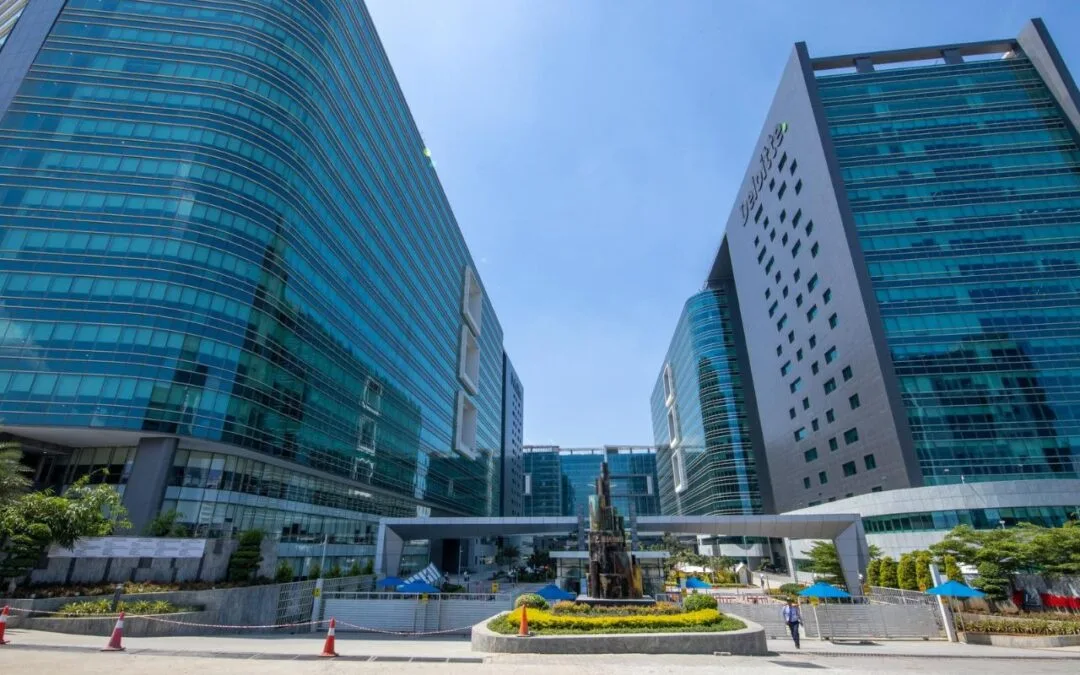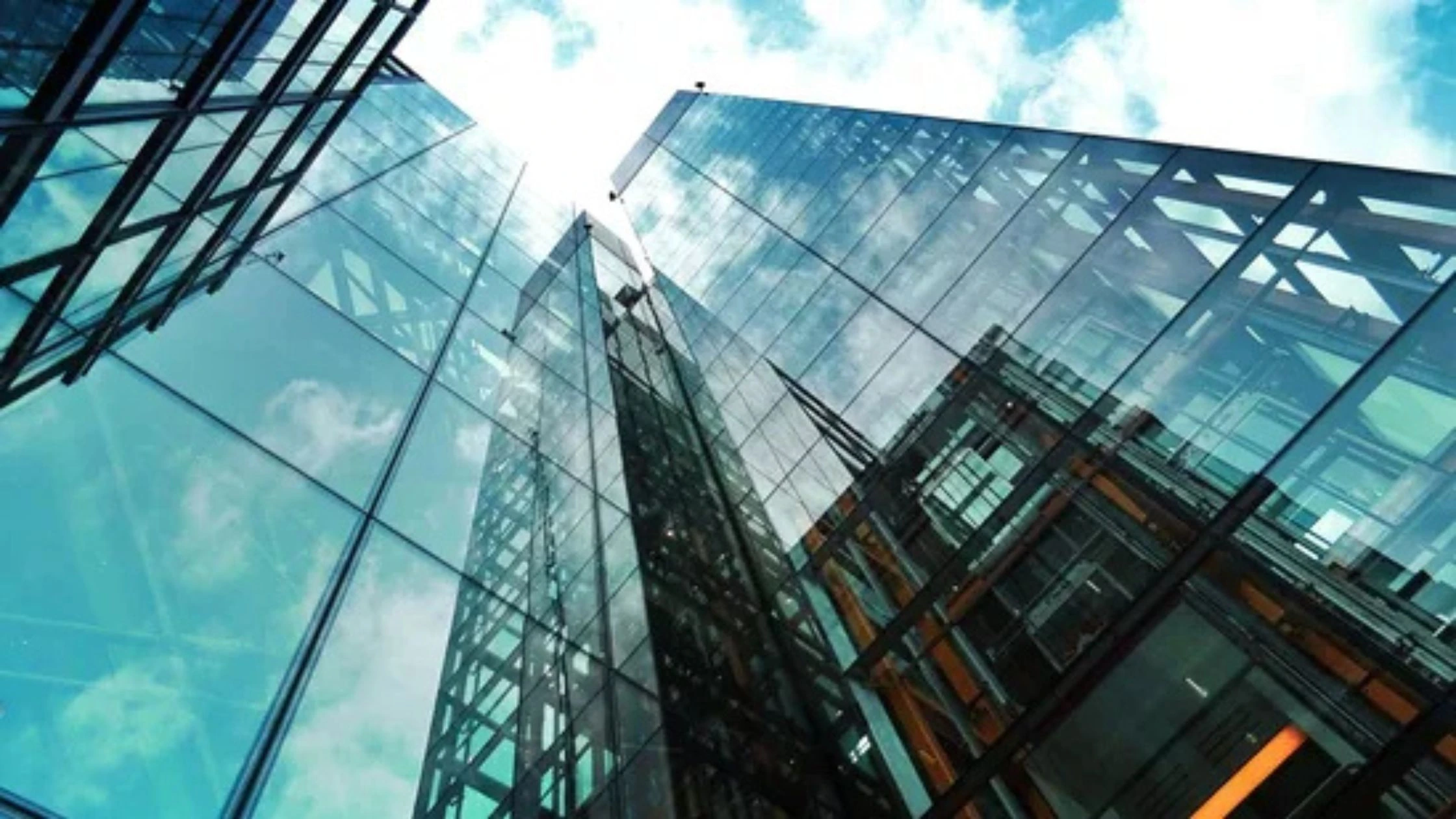Table of Content
India’s office real estate market continues to defy regional headwinds, setting the stage for a record year in 2025. Despite a challenging macroeconomic environment across Asia-Pacific, office leasing in India 2025 is expected to touch nearly 50 million sq ft, powered by robust Global Capability Centre (GCC) demand, IT sector recovery, and sustained investor confidence.
While several Asian cities grapple with softening rents and limited corporate expansion, India’s top metros Bengaluru, Delhi-NCR, and Mumbai remain bright spots, recording strong occupier activity and stable rental growth.
India’s Office Market Outperforms Asia-Pacific
According to recent insights from Knight Frank, India’s prime office markets outshone their Asia-Pacific counterparts in the July–September quarter. While most regional markets witnessed stagnation or a dip in rentals, India recorded an average 4.3% year-on-year rental growth, demonstrating the sector’s resilience and the country’s strong corporate fundamentals.
This sustained performance can be attributed to a diverse occupier base, structural demand from multinational corporations, and the steady rise of GCCs that continue to expand their India footprint. Analysts suggest that the momentum behind office leasing in India 2025 is proof of the country’s growing appeal as a global business hub, with occupiers viewing Indian metros as cost-efficient, talent-rich destinations for long-term operations.
Also Read: India’s Real Estate Hits $2.9 Billion with 42 Transactions in July–Sept Quarter
Bengaluru, Delhi-NCR, and Mumbai Lead the Growth Story
Among the top three metros, Bengaluru remains the clear leader in the Indian office leasing market. The city recorded a robust 8.8% year-on-year rental growth, driven by GCCs and technology firms taking up large office spaces in Outer Ring Road, Whitefield, and North Bengaluru. Prime rentals in the Central Business District (CBD) averaged ₹1,807 per sq ft per year, reflecting sustained occupier confidence.
Delhi-NCR followed with a 3% YoY rental increase, supported by growing demand from consulting and co-working occupiers. Prime office locations such as Connaught Place and Gurugram continued to attract high-value tenants, with rentals around ₹4,200 per sq ft per year.
Mumbai, the country’s financial capital, maintained steady 3.9% YoY growth, led by demand from BFSI, consulting, and media sectors. The Bandra-Kurla Complex (BKC) saw prime rentals touch ₹3,953 per sq ft per year, underlining its continued premium positioning.
These figures collectively showcase the concentrated strength of office leasing in India 2025, with the top three metros accounting for nearly two-thirds of total leasing activity.
The GCC Factor: The New Growth Engine
The biggest catalyst behind India’s office market expansion is the rise of Global Capability Centres. Over the past few years, GCCs have evolved from back-office support units to strategic hubs driving innovation, digital transformation, and product development. This evolution has translated into aggressive space take-ups, particularly in Bengaluru, Hyderabad, Pune, and Chennai.
India’s unmatched talent pool, cost efficiency, and advanced digital infrastructure have made it the preferred destination for GCC expansion across industries such as BFSI, healthcare, manufacturing, and technology. As a result, much of the surge in office leasing in India 2025 is expected to stem from this segment, with multinational corporations signing multi-year leases and committing to high-quality, tech-enabled office spaces.
Balanced Supply and Vacancy Trends
Despite a healthy 9 million sq ft of new supply added in Q3 2025, vacancy levels across major cities have remained stable a sign of strong absorption and market balance.
- Bengaluru: 11.5% vacancy
- Delhi-NCR: 12.5% vacancy
- Mumbai: 17.3% vacancy
Pre-commitments by large corporates and GCCs have prevented oversupply pressures, allowing developers to maintain pricing power. Moreover, there is a visible shift toward Grade A+ sustainable offices, with developers prioritizing ESG compliance, wellness design, and smart building technologies.
These trends reinforce that office leasing in India 2025 is not only demand-led but also supported by quality supply and sustainable infrastructure.
Market Outlook: Growth Momentum to Continue in 2026
Looking ahead, Knight Frank projects the Indian office market to maintain steady growth through 2026, supported by digital acceleration, hybrid workplace adoption, and ongoing GCC expansion.
Shishir Baijal, Chairman and Managing Director of Knight Frank India, noted that India’s office segment is now viewed as a “beacon of stability” in an otherwise uncertain global landscape. The combination of strong economic fundamentals, political stability, and maturing real estate ecosystems gives India a significant competitive edge in attracting global occupiers.
Experts forecast that the momentum seen in office leasing in India 2025 will extend into the next year, with average rentals continuing to rise in line with robust occupier demand.
Also Read: Chhattisgarh HC: Daughters Can’t Claim Property Share Under Hindu Succession Act Pre-1956
India vs Asia-Pacific: A Clear Divergence
In contrast to India’s positive performance, the broader Asia-Pacific region saw a 1.4% YoY decline in prime office rents, with many cities recording stagnant quarterly growth. Chinese and Southeast Asian markets, weighed down by slower economic recovery, pulled down the regional average.
This divergence underscores India’s resilience and growing dominance in the region’s commercial property landscape. For global investors seeking stable returns amid global volatility, India’s office markets, particularly in Bengaluru, Delhi-NCR, and Mumbai stand out as high-performing, future-ready destinations.
The contrast also highlights why international capital continues to flow into Indian commercial real estate, reinforcing confidence in office leasing in India 2025 as a long-term growth story.
Conclusion
India’s office real estate sector is poised for a landmark year. With leasing volumes expected to touch 50 million sq ft in 2025, the country is set to outperform regional peers and strengthen its position as Asia’s most resilient office destination.
The synergy of GCC-led expansion, IT recovery, and institutional investor trust paints an optimistic picture for the years ahead. As global corporations deepen their India operations, the next wave of growth will likely be driven by demand for sustainable, tech-integrated office environments that support innovation and talent retention.
With strong fundamentals, diversified occupier demand, and consistent rental appreciation, office leasing in India 2025 represents not just a cyclical recovery but the beginning of a long-term transformation in the country’s commercial real estate landscape.







Ans 1. India is expected to lease around 50 million sq ft in 2025, led by Bengaluru, Delhi-NCR, and Mumbai.
Ans 2. The top metros are Bengaluru, Delhi-NCR, and Mumbai, with strong demand from IT firms and Global Capability Centres (GCCs).
Ans 3. GCCs are driving large-scale space take-ups, long-term leases, and demand for Grade A+ offices across key cities.
Ans 4. India recorded 4.3% YoY rental growth, outperforming most Asia-Pacific markets, where rents have stagnated or declined.
Ans 5. Sustained growth is expected due to hybrid workplaces, digital adoption, and GCC expansion, making India a stable, long-term commercial real estate destination.